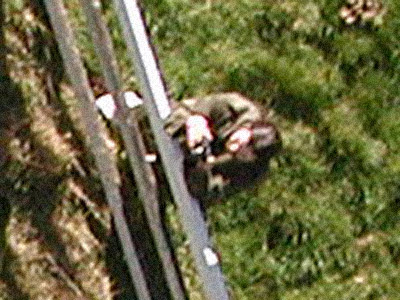So, I built a device to loft the best digital camera I had, and remotely trip the shutter via radio control.
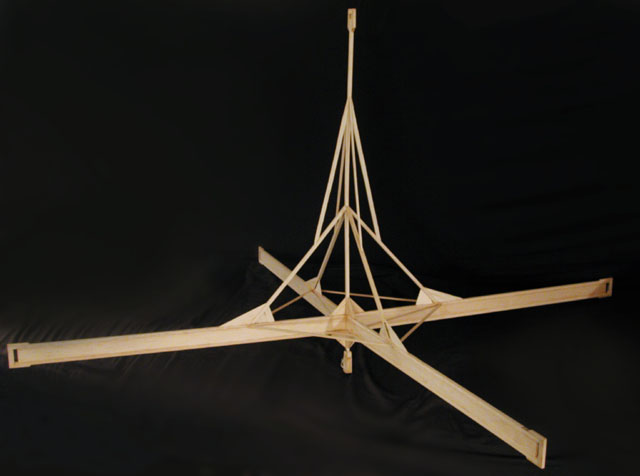
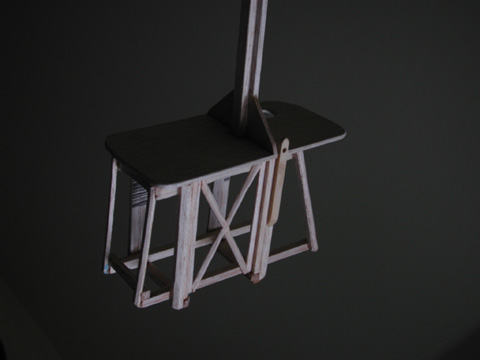
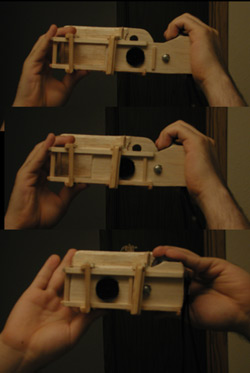

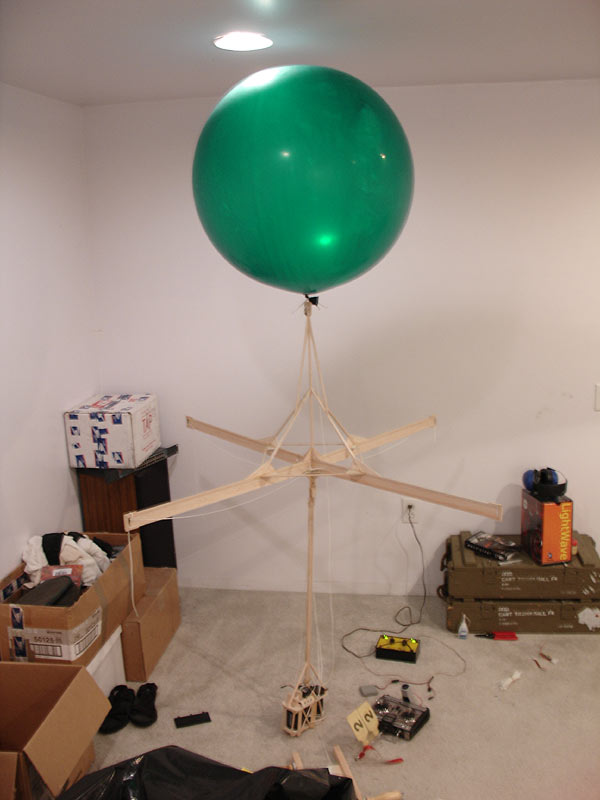
Report:
Weather at the test site could not have been much better - clear skies, bright sun and a very light breeze. This breeze unfortunately carried quite a bit of gusty turbulence, which becomes relevant later.
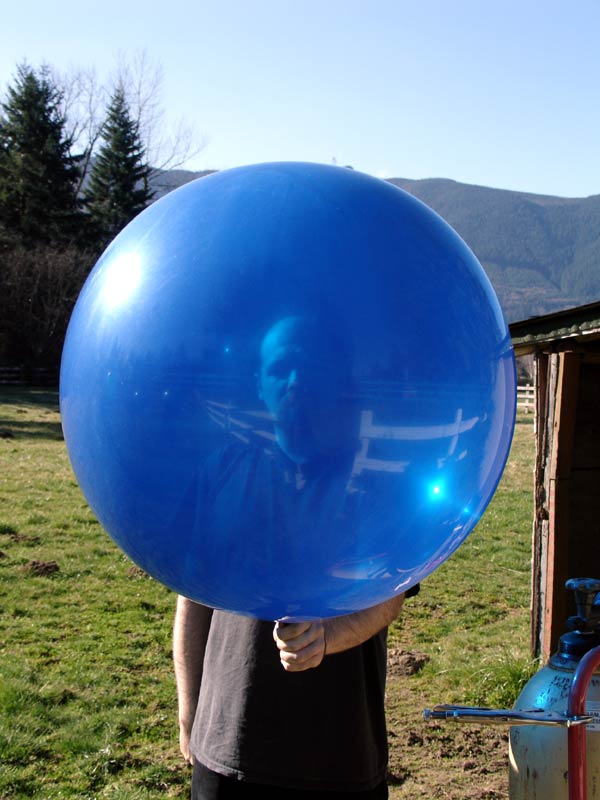 Your host,
behind one of the 36" Qualtex latex balloons that generated the lift for
this project.
Your host,
behind one of the 36" Qualtex latex balloons that generated the lift for
this project.
Constructing the machine on the site would have been impossible without the help of my wonderful assistants - thanks again, guys.
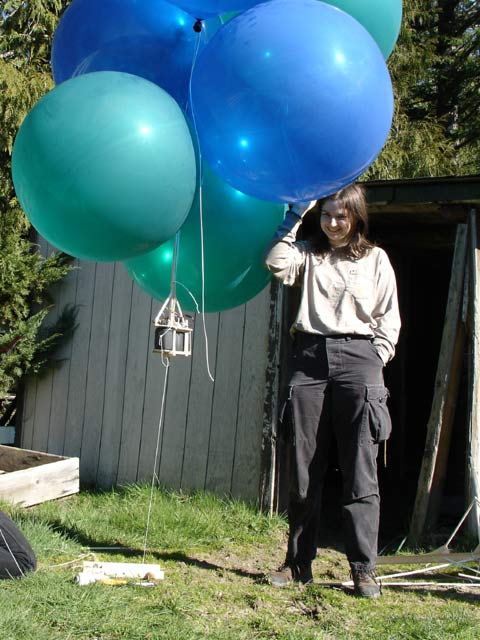
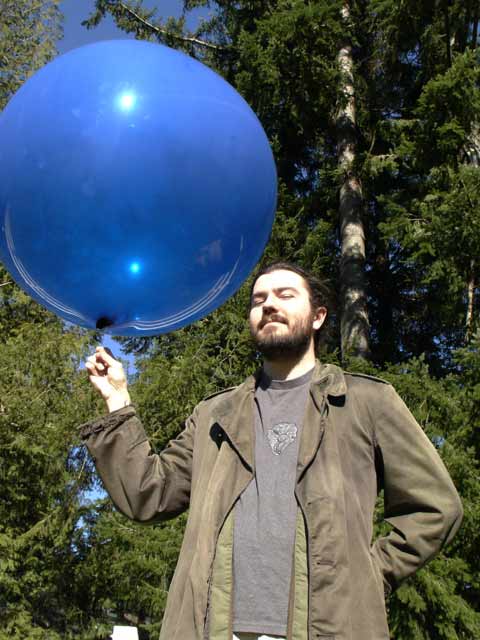
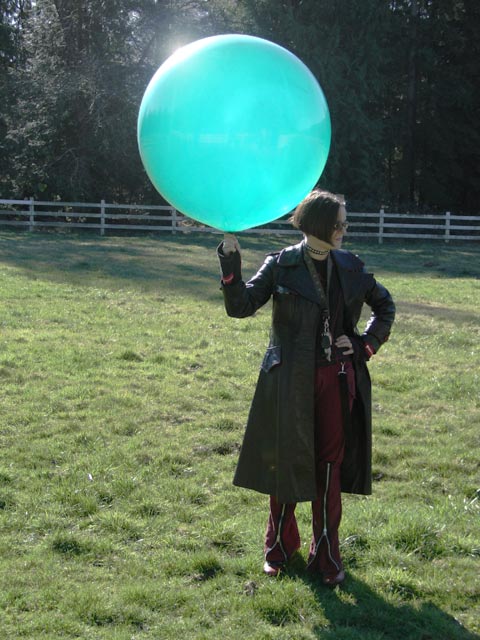
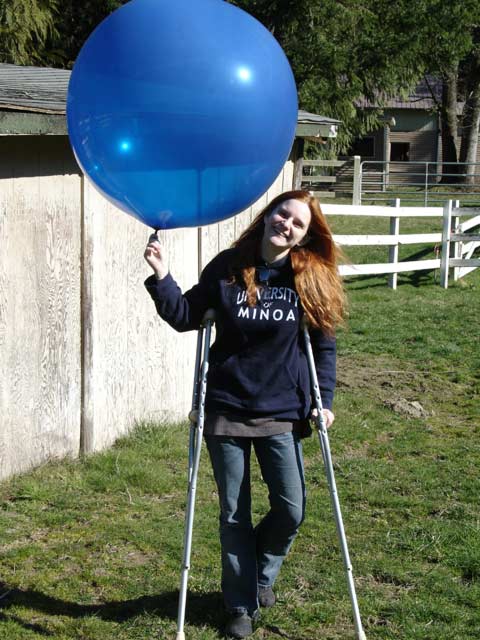
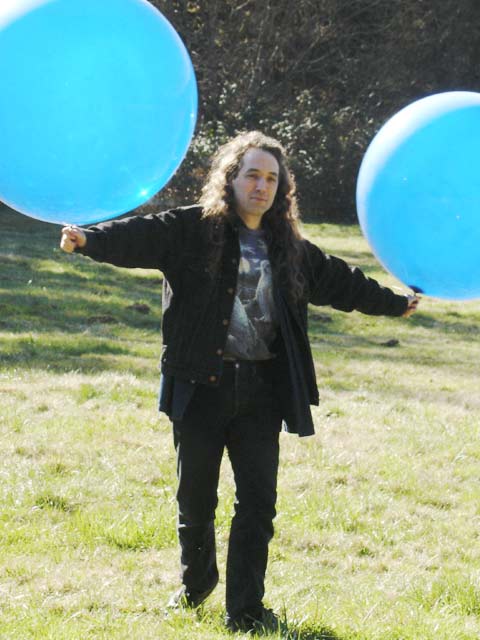
I count myself very lucky to have friends willing to pitch in on my mad schemes.
The lift numbers I got out of the balloons in practice were exceedingly dissappointing. I'd been lead to expect roughly .9 pounds of lift per 36" helium balloon - in the field, I was getting roughly .4, or less than half of the projected nominal value. This meant that I had to use all five attach points, and in fact later kludge in a sixth to get good lift performance for the complete harness with string.
In the calm air of initial tests, the thing just worked GREAT.
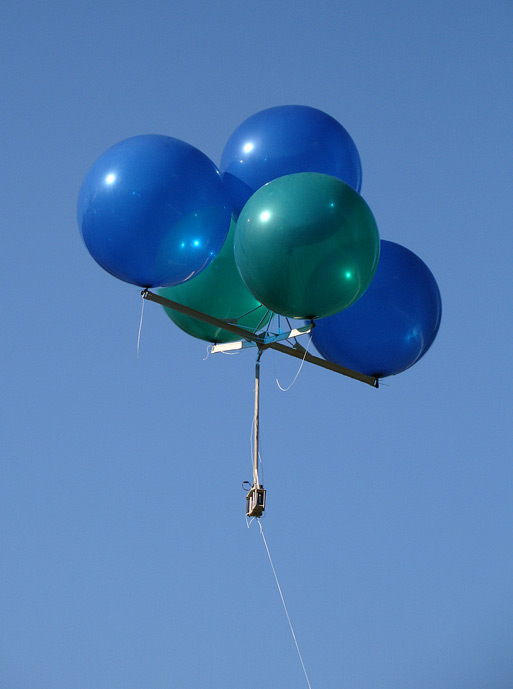
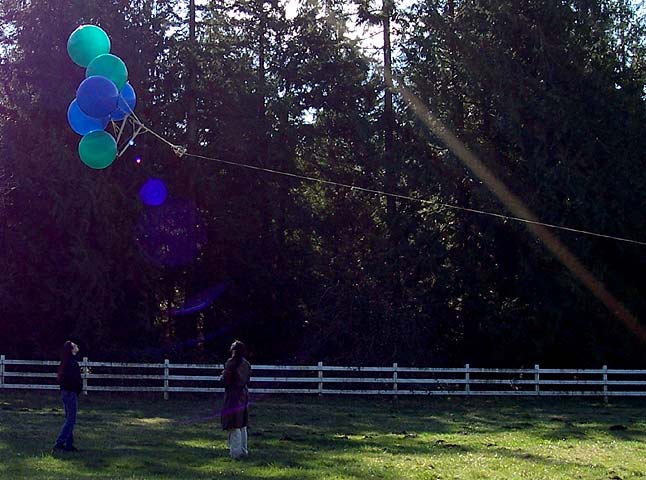
Notice in the above picture that the string is almost horizontal, driven before the wind. Also notice the haphazard array of broken spars. Fortunately, I'm a paranoid engineer, and I'd secured all of the vital components together with 150lb-test stunt kite string as well as the rigid structure (well, ok, formerly rigid structure) - so this failure, while ugly, was non-catastrophic.
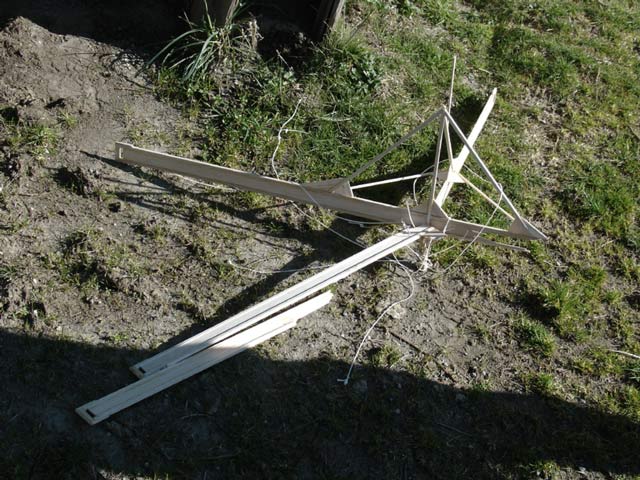 The superstructure was toast. Fortunately, I'd had a contingency in mind
in the event this happened.
The superstructure was toast. Fortunately, I'd had a contingency in mind
in the event this happened.
After a bit of rebuilding...
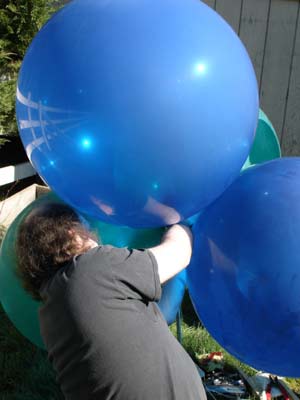
and of course the assistance of my assistants, I reforged the machine into a simplified form. This mode was less visually elegant, and MUCH less safe, as a single point failure of the lower hinge ziptie assembly would have resulted in the camera falling 70 feet freefall to the cold hard earth while the balloons escaped into the troposphere.
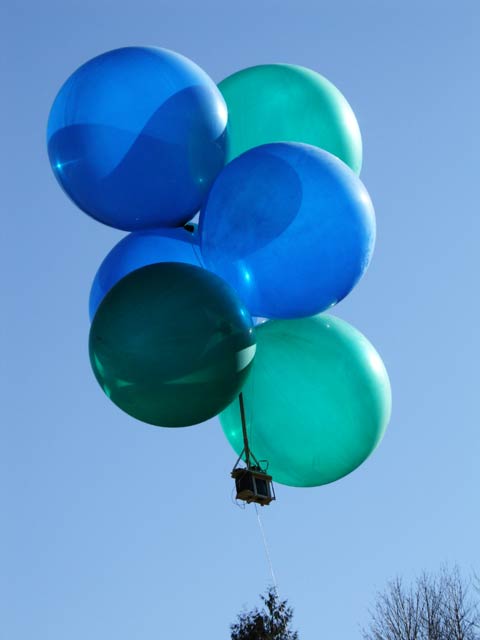
A hack, but it worked. If it's stupid and it works, it's not stupid, right? :) This configuration was lighter, and in practice, actually remained quite a bit more stable in flight than the previous mode. And that dreaded single point failure never happened, so I got lucky there.
The bulk of the photography I did was in this configuration with good results. I shot quite a few very useful photos for my game development project, as well as a nifty movie of 0-75 foot ascent. Here's a half-size, compressed version of one of the ground texture shots:
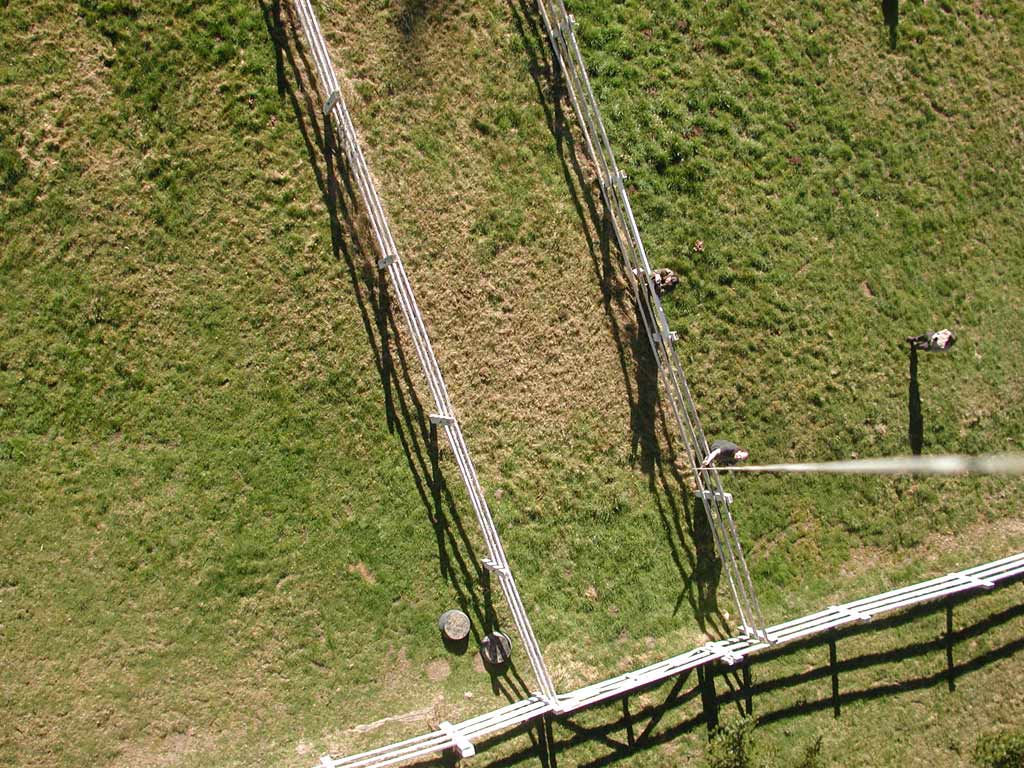
and an enlarged detail from that at actual resolution:
